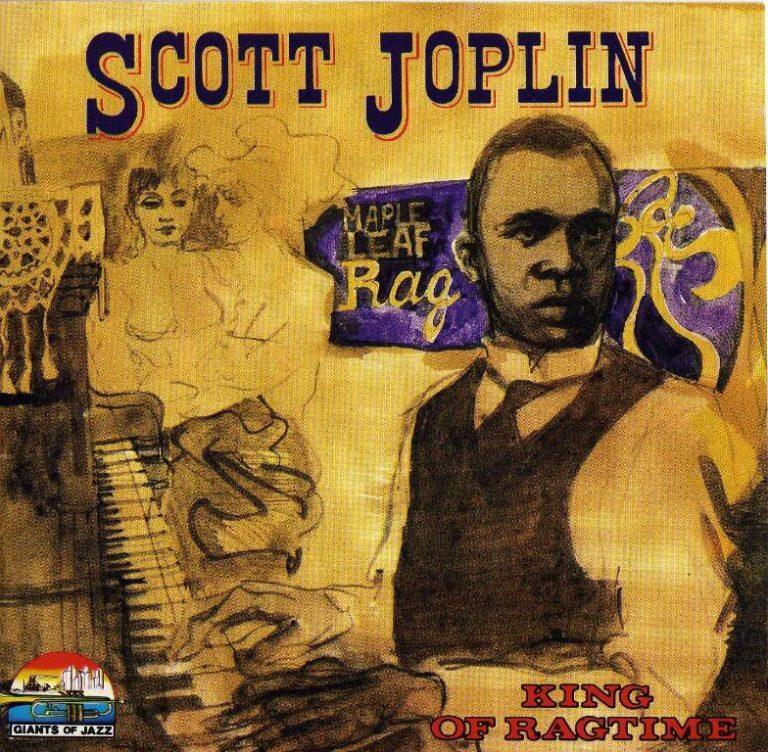
#BEST OF SCOTT JOPLIN SERIES#
Gifted with a clear, bright soprano that soars over the orchestra in a series of arias, and conflicted by the choices she has to make, Bickersteth is so effective she makes you think of all the iconic characters in operatic repertoire. Kristin Renee Young, meanwhile, is enchanting as Treemonisha’s sympathetic sister Lucy.īut it’s Bickersteth, involved in this production for the seven years it’s been in development, who emerges as the piece’s natural leader. Baker’s Monisha, Lowe’s Pastor, and Faatoalia’s Remus practically raise the roof of the Bluma Appel, while Davis’s Ned and Cedric Berry – who plays a mysterious figure who first introduces Treemonisha to the Maroon – are a little subtler. The opera’s supporting characters are carefully defined, although their dynamics are uneven. (The same can’t always be said of Western opera dance sequences.) This scene gets a sombre variation in the second act when the Pastor’s opposite number, the Maroon leader Nana Buluku (SATE), mourns one of their fallen.Įach one of choreographer Esie Mensah’s dance numbers tells us a lot about the characters and helps mix up the opera’s rhythms. One of the highlights is an amusing Act One revival scene, played for comic relief, in which the extroverted and accurately named Pastor Alltalk (Marvin Lowe) “heals” members of his congregation.

While there’s occasionally an episodic feel to the opera, especially in the second act, Mengesha makes sure we always know where we are and what’s at stake for Treemonisha and the two groups of people she’s caught between. That contrast also emerges in the colourful costumes (by Nadine Grant) and sets (by Camellia Koo) that fill up director Weyni Mengesha’s fresh and lively staging. Conducting an orchestra that includes both European and African instruments, Kalena Bovell brings out the rich textures and sounds that evoke the two strands of this milieu - the world of the Freedmen, who have been influenced by colonial customs, and the Maroons, who live a life more tied to the land and sea. Montgomery and Norpoth’s orchestrations suggest everything from classical and gospel to Calypso and blues. It’s misleading to call this a ragtime opera, although in many sequences you can feel the familiar syncopated rhythms of one of the earliest incarnations of jazz. Joplin’s score encompasses a wide range of colours and moods. She believes the answer lies in a group of nearby forest-dwellers called the Maroons, whom the Freedmen fear because of their Hoodoo beliefs and customs. But when she discovers that her parents aren’t her parents, and also realizes she doesn’t love Remus, she calls off the wedding and sets out on a journey to discover her real roots. She’s just about to be married to an upstanding - if rather dull - man named Remus (Ashley Faatoalia). Raised by Ned (Nicholas Davis) and Monisha (Andrea Baker) among a group of upwardly mobile Black folks called the Freedmen (slavery was abolished in 1865), she’s the first in her community to attend college.


Twenty years later, that same child is now grown up and goes by the name of Treemonisha (Neema Bickersteth). She’s soon shot, but before she dies she secretly places her baby inside a hollowed-out tree. In a brief prologue set in 1864 at a plantation near Texarkana, Arkansas, a young enslaved woman carrying a newborn child is being pursued by someone. With these changes, the work - it’s being dubbed “a musical reimagining” - emerges as layered, profound, and urgently relevant. While the score remains largely intact, it’s been newly arranged and orchestrated by Jessie Montgomery and Jannina Norpoth and the book and libretto have been effectively adapted by Leah-Simone Bowen and Cheryl L. His score and libretto were essentially lost until the 1970s, when it received its world premiere at Atlanta’s Morehouse College.Īnd so this Volcano Theatre production, presented by TO Live and the Luminato Festival in association with a handful of other companies, feels like a major rediscovery. Unfortunately, that premiere left audiences and potential investors underwhelmed it also nearly bankrupted the composer. He paid for the score’s publication and a modest concert version in Harlem, cutting his already huge expenses by playing the piano accompaniment himself.
#BEST OF SCOTT JOPLIN FULL#
While Joplin is best known for his lively, toe-tapping ragtime classics like the “Maple Leaf Rag” and “The Entertainer,” he also penned three works for the stage, including 1911’s Treemonisha.īut he never lived to see a full staging of that work. It’s about time he got proper recognition for his contribution to the operatic canon. In the case of Scott Joplin’s Treemonisha, however, the king of ragtime’s name deserves pride of place at the beginning of the title. Who else would these shows be written by? The Gershwins’ Porgy and Bess? Rodgers and Hammerstein’s Cinderella? Um. When a show’s title comes complete with a composer attached, it often feels like a crass marketing move.


 0 kommentar(er)
0 kommentar(er)
